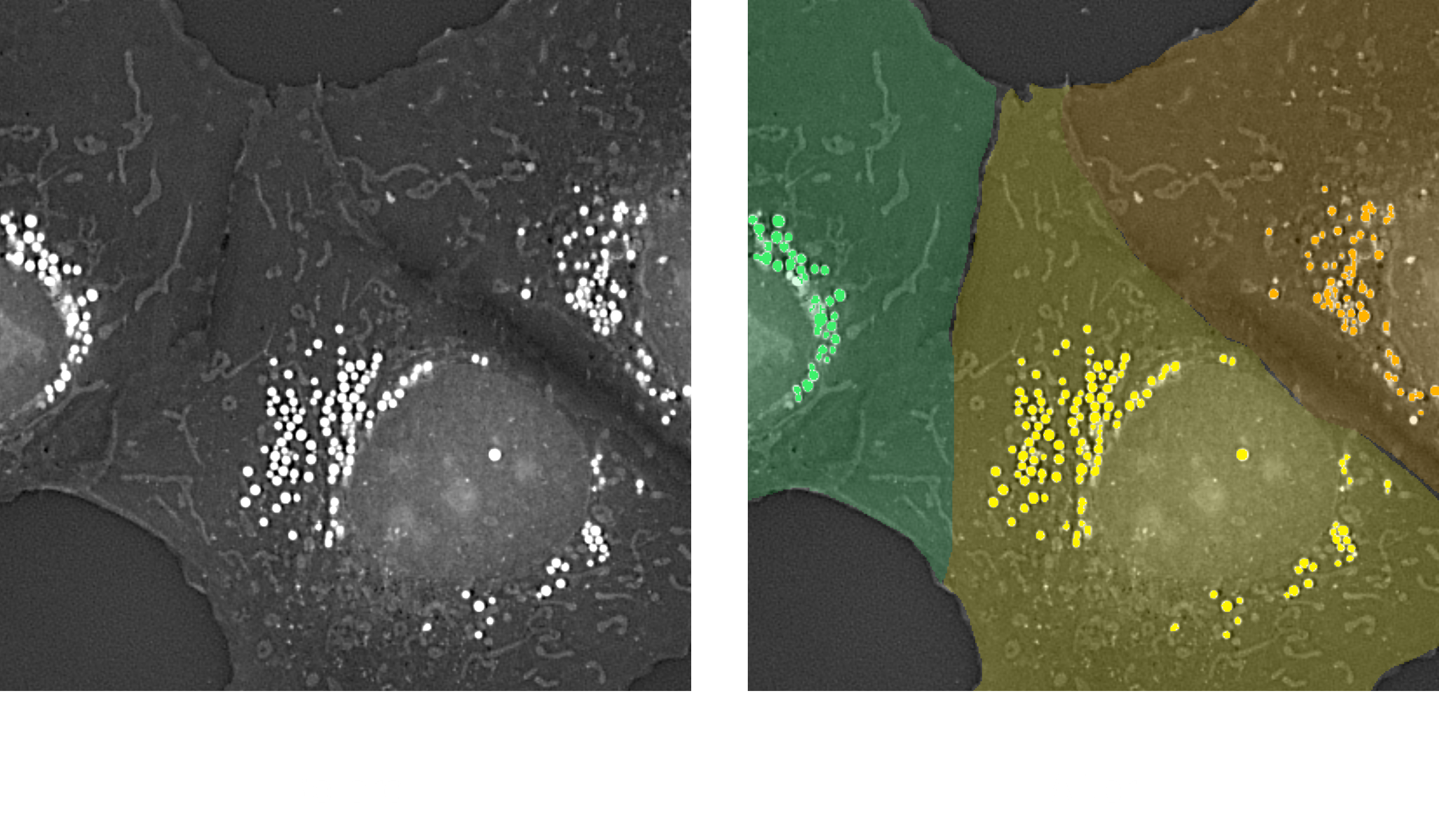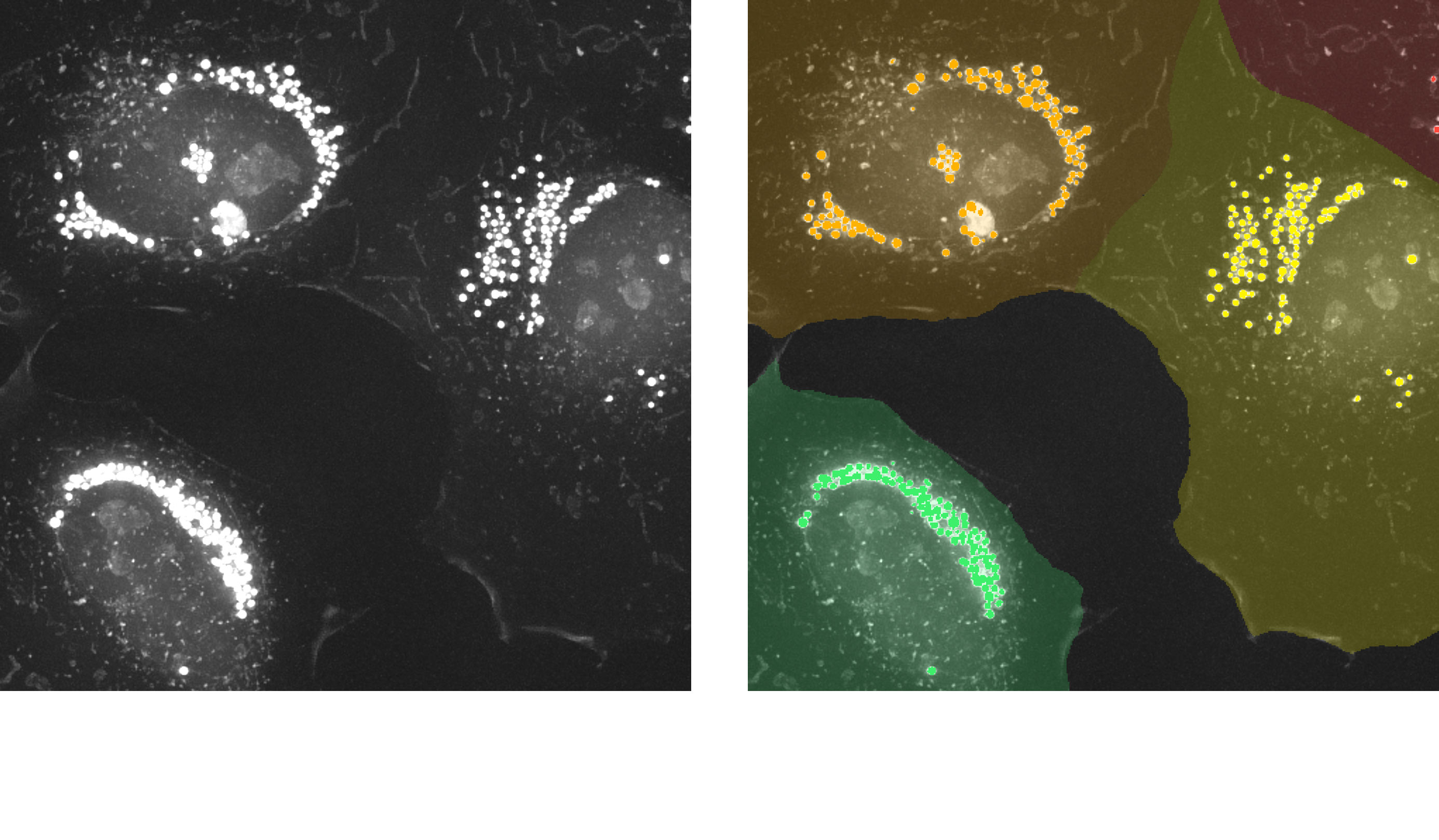Lipid Droplet per Cell AI-Powered
1. Pipeline: (3D) Lipid Droplet per Cell AI-powered
This pipeline segments and quantifies lipid droplets (LDs) on a per-cell basis by combining rule-based LD detection with AI-powered cell segmentation. While the identification of lipid droplets relies on their high refractive index and round shape, individual cells are segmented using the StarDist model, which improves accuracy in separating adjacent or irregularly shaped cells.
By leveraging deep learning for the per-cell step, this pipeline enhances segmentation robustness, especially in moderately confluent or morphologically diverse samples. Researchers can obtain detailed per-cell lipid droplet metrics, enabling more reliable analysis of lipid accumulation patterns across heterogeneous cell populations.
Output: Single-cell masks and measurements, Labeled lipid droplets with individual measurements, Per-cell LD metrics

2. Pipeline: (2D) Lipid Droplet per Cell AI-powered
This pipeline performs per-cell lipid droplet (LD) analysis in 2D projections by combining rule-based LD segmentation with AI-powered cell segmentation. LDs are detected based on their high refractive index (RI) values and round morphology using a traditional rule-based approach. To enable cell-specific quantification, the Cellpose model is used to generate single-cell masks, allowing each droplet to be assigned to its corresponding cell.
This integrated approach provides both object-level and per-cell LD measurements, making it ideal for studying cell-to-cell variation in lipid content. The pipeline is well-suited for high-throughput analysis, especially when cells are well-separated in 2D.
Output: Single-cell masks, Labeled lipid droplets with individual measurements, Per-cell LD measurements.

Access to analysis pipelines is available upon request. Please send your inquiry to info@tomocube.com to explore the options best suited to your needs.